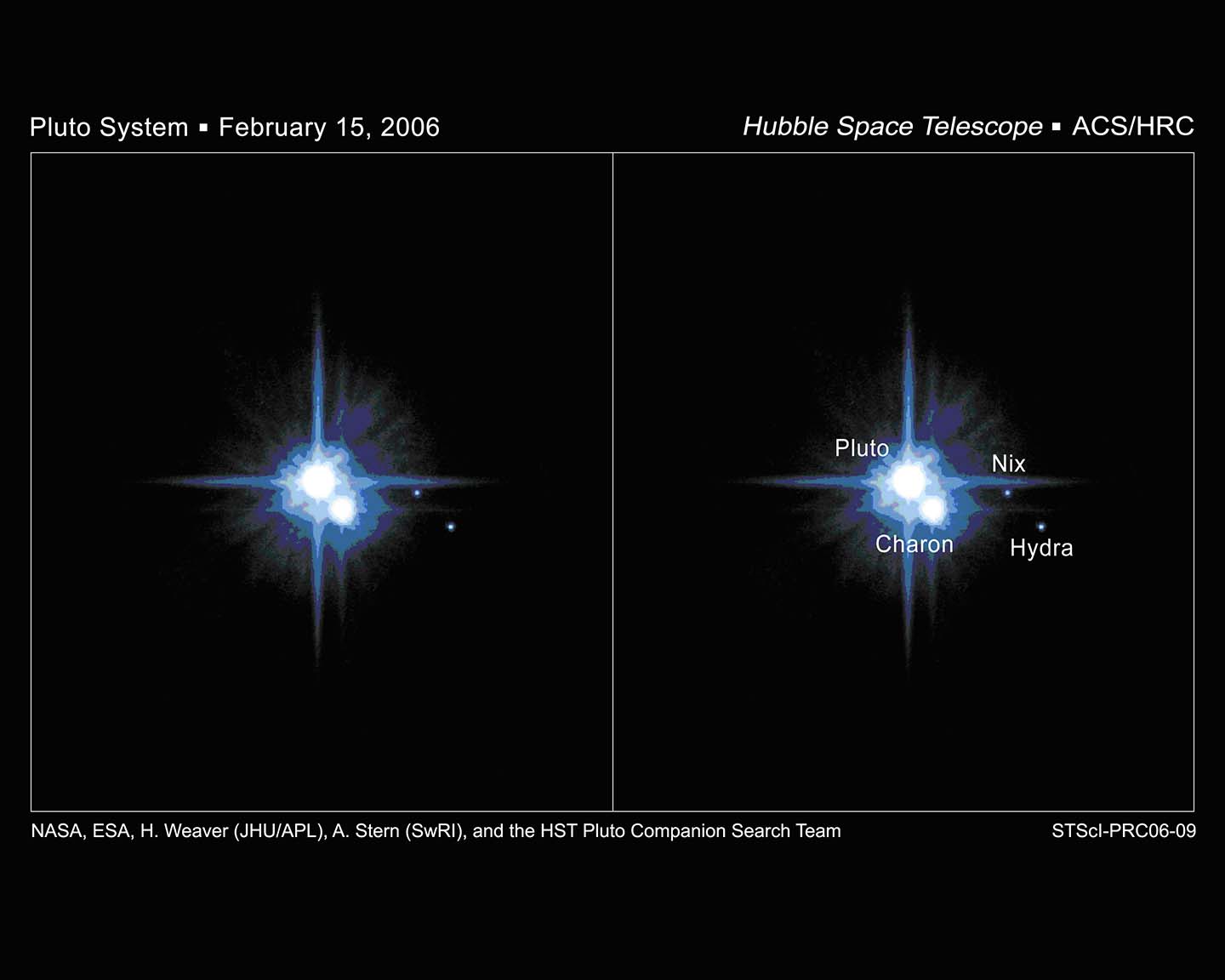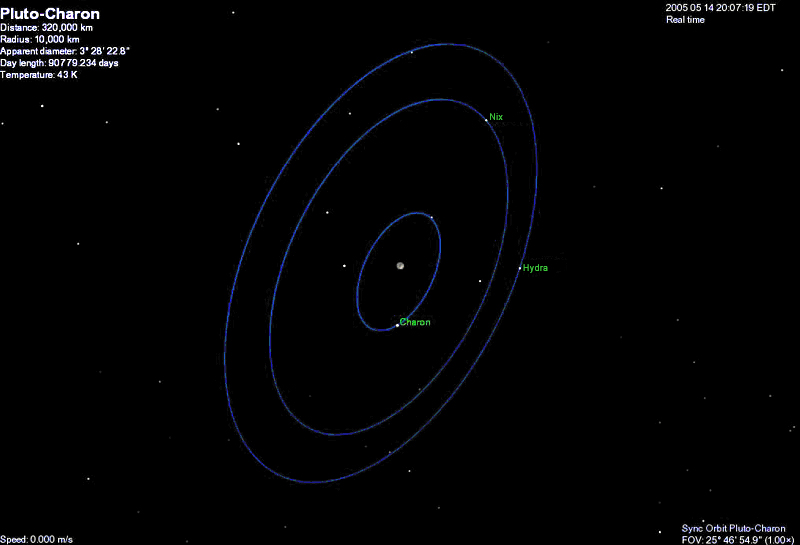Press Release
Pluto's Two Small Moons Christened Nix and Hydra
The names Nix and Hydra have been approved for the two small satellites of Pluto discovered in May 2005. The International Astronomical Union (IAU), the internationally recognized authority for assigning designations to celestial bodies, approved the names this week.
A team of researchers from Southwest Research Institute (SwRI) in Boulder, Colo., The Johns Hopkins University Applied Physics Laboratory (APL) in Laurel, Md., the Space Telescope Science Institute in Baltimore and Lowell Observatory in Flagstaff, Ariz., used Hubble Space Telescope images to make the discovery in support of NASA's New Horizons mission to Pluto and the Kuiper Belt beyond.
"We're very pleased with the decision of the IAU," says co-leader of the discovery team, Dr. Alan Stern, executive director of the SwRI Space Science and Engineering Division and principal investigator of the New Horizons mission. "You're going to be hearing a lot more about Nix and Hydra in coming years — astronomers are already applying for telescope time to study their orbits and physical properties. And when New Horizons flies by Pluto in the summer of 2015, each will be mapped in detail."
"Pluto doesn't reveal its moons easily," adds discovery team co-leader and New Horizons Project Scientist Dr. Hal Weaver, of APL. "It took 48 years after the discovery of Pluto to find Charon and another 27 years to find Nix and Hydra. Perhaps we won't have to wait as long for the next discovery because the New Horizons spacecraft will be making a rendezvous with Pluto in nine years and will be searching for other small satellites."

